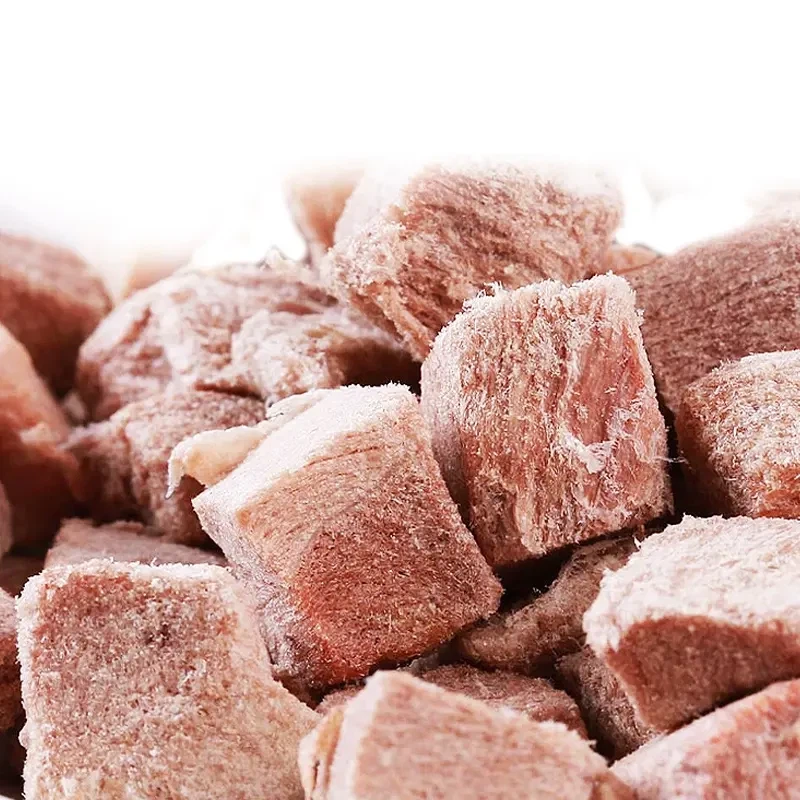Hey there! As a freeze - drying supplier, I've seen firsthand how crucial the control system is in the freeze - drying process. Let's dive right in and explore what role it plays.
1. Understanding Freeze - Drying Basics
First off, let's quickly go over what freeze - drying is. Freeze - drying, also known as lyophilization, is a process that removes water from a product by freezing it and then sublimating the ice directly into vapor. This is super useful for preserving all sorts of things, like food, pharmaceuticals, and biological samples. It helps maintain the product's structure, flavor, and nutritional value.
2. The Control System: A Key Player
The control system in freeze - drying is like the brain of the whole operation. It's responsible for managing and regulating all the different variables involved in the process. Without a good control system, the freeze - drying process could go haywire, leading to poor - quality products.
Temperature Control
One of the most important functions of the control system is temperature control. During the freezing stage, the control system ensures that the product is cooled down to the right temperature at the right rate. If the temperature drops too quickly, it can cause the formation of large ice crystals, which can damage the product's structure. On the other hand, if it's too slow, it can increase the processing time and energy consumption.
For example, when we're freeze - drying raw meat for pet food, the control system carefully monitors and adjusts the temperature to make sure the meat freezes evenly. This is crucial because uneven freezing can lead to inconsistent drying and a less - than - ideal end product. You can learn more about our Healthy Freeze - dried Raw Meat Supplier services on our website.
During the sublimation stage, the control system maintains the temperature at a level that allows the ice to sublimate without melting. This requires precise control because even a small temperature fluctuation can cause the ice to melt, ruining the freeze - drying process.
Pressure Control
Pressure control is another vital aspect. The control system reduces the pressure in the drying chamber to create a vacuum environment. This low - pressure environment is necessary for sublimation to occur. By carefully adjusting the pressure, the control system can speed up or slow down the sublimation process.
In the case of freeze - drying egg yolks for pet food, the control system keeps the pressure at an optimal level to ensure efficient sublimation. This helps preserve the nutritional value of the egg yolks. Check out our Safe Raw Egg Yolk Yolk Factory to see how we apply these control techniques.


Time Control
Time is also a critical factor. The control system determines how long each stage of the freeze - drying process should last. It takes into account factors like the type of product, its initial moisture content, and the desired final moisture level.
For instance, when freeze - drying catgrass, the control system calculates the appropriate time for freezing, sublimation, and desorption. This ensures that the catgrass retains its freshness and nutritional properties. You can find more about our Suppliers Of Catgrass Gifts Birth To Flesh on our site.
3. Quality Assurance
The control system plays a huge role in quality assurance. By precisely controlling the temperature, pressure, and time, it helps produce consistent, high - quality freeze - dried products.
It also allows for real - time monitoring of the process. Operators can see the status of the freeze - drying process at any time and make adjustments if necessary. This helps catch any potential issues early on, preventing the production of defective products.
4. Energy Efficiency
A well - designed control system can also improve energy efficiency. By optimizing the temperature and pressure settings, it can reduce the amount of energy required for the freeze - drying process. This not only saves costs but also makes the process more environmentally friendly.
For example, by accurately controlling the temperature during the freezing and sublimation stages, the control system can minimize the energy needed to maintain the desired conditions. This is especially important for large - scale freeze - drying operations, where energy costs can be a significant expense.
5. Adaptability
The control system needs to be adaptable to different types of products. Different products have different freeze - drying requirements, such as different freezing rates, sublimation temperatures, and pressure levels.
The control system can be programmed to adjust to these specific requirements. This flexibility allows us to handle a wide range of products, from delicate biological samples to robust food items.
6. Automation and Integration
In modern freeze - drying systems, the control system often features automation and integration capabilities. It can be connected to other equipment in the production line, such as conveyors, filling machines, and packaging machines.
This automation and integration improve the overall efficiency of the production process. For example, the control system can communicate with the conveyor to ensure that the products are loaded and unloaded at the right time. It can also coordinate with the filling and packaging machines to ensure a seamless production flow.
7. Contact Us for Procurement
If you're in the market for high - quality freeze - dried products or want to learn more about our freeze - drying services, we'd love to hear from you. Our advanced control systems ensure that we can provide you with the best possible products. Whether you're a pet food manufacturer, a pharmaceutical company, or involved in any other industry that requires freeze - dried products, we have the expertise and capabilities to meet your needs. Don't hesitate to reach out and start a procurement discussion with us.
References
- "Lyophilization: Introduction and Basic Principles" by Gustavo V. Barbosa - Canovas et al.
- "Freeze - Drying Technology: Principles and Practice" by Richard J. Simpson.
